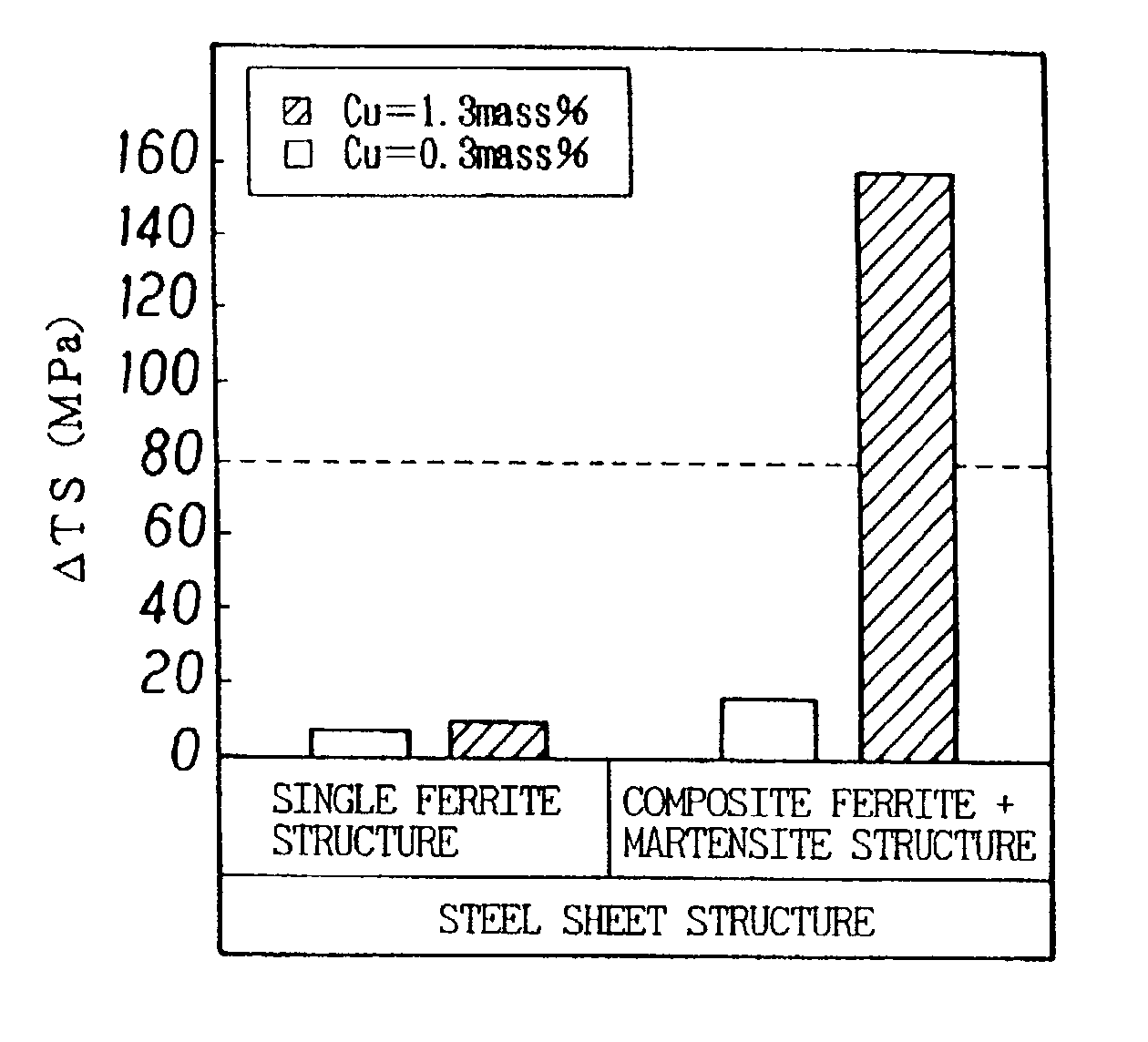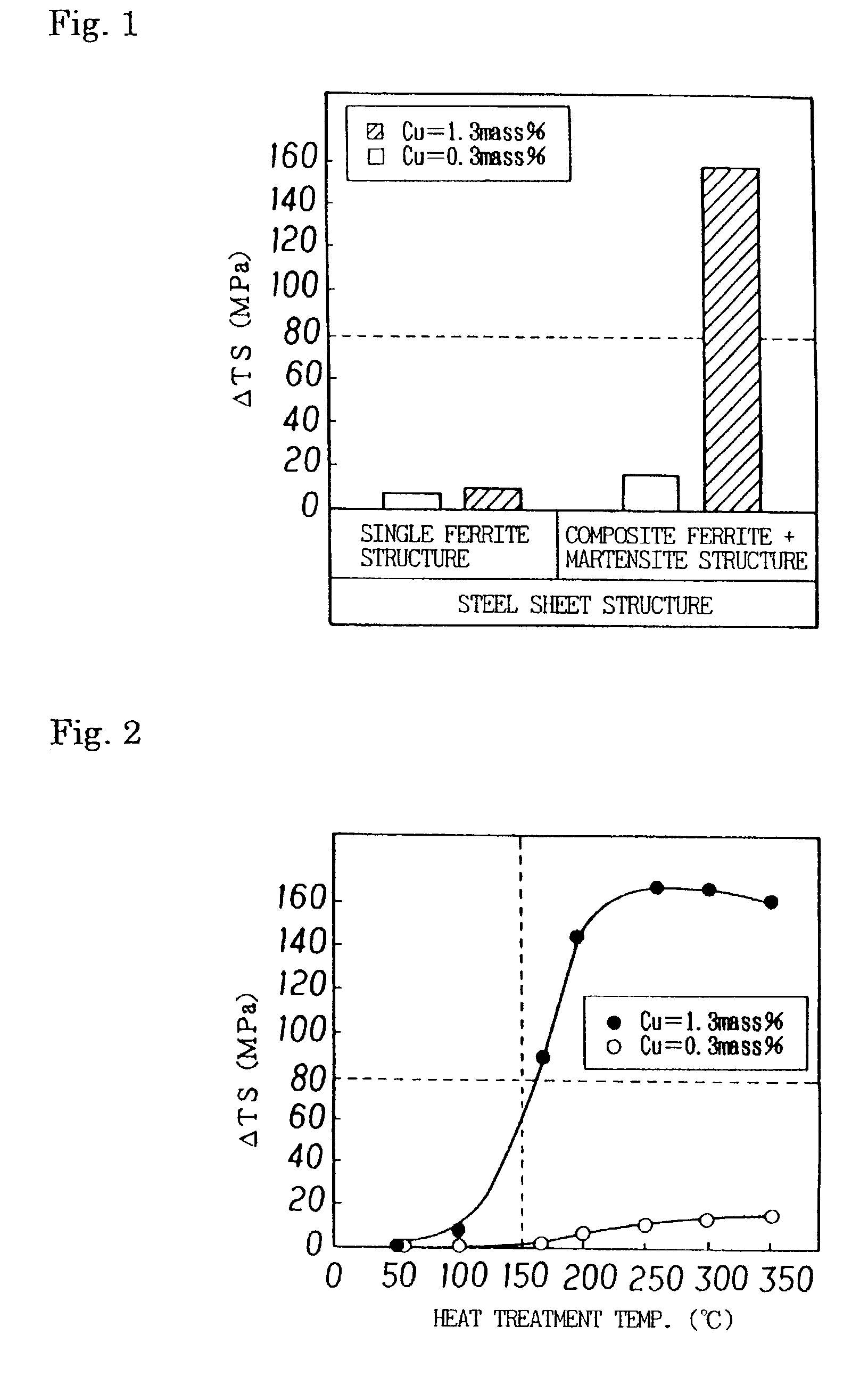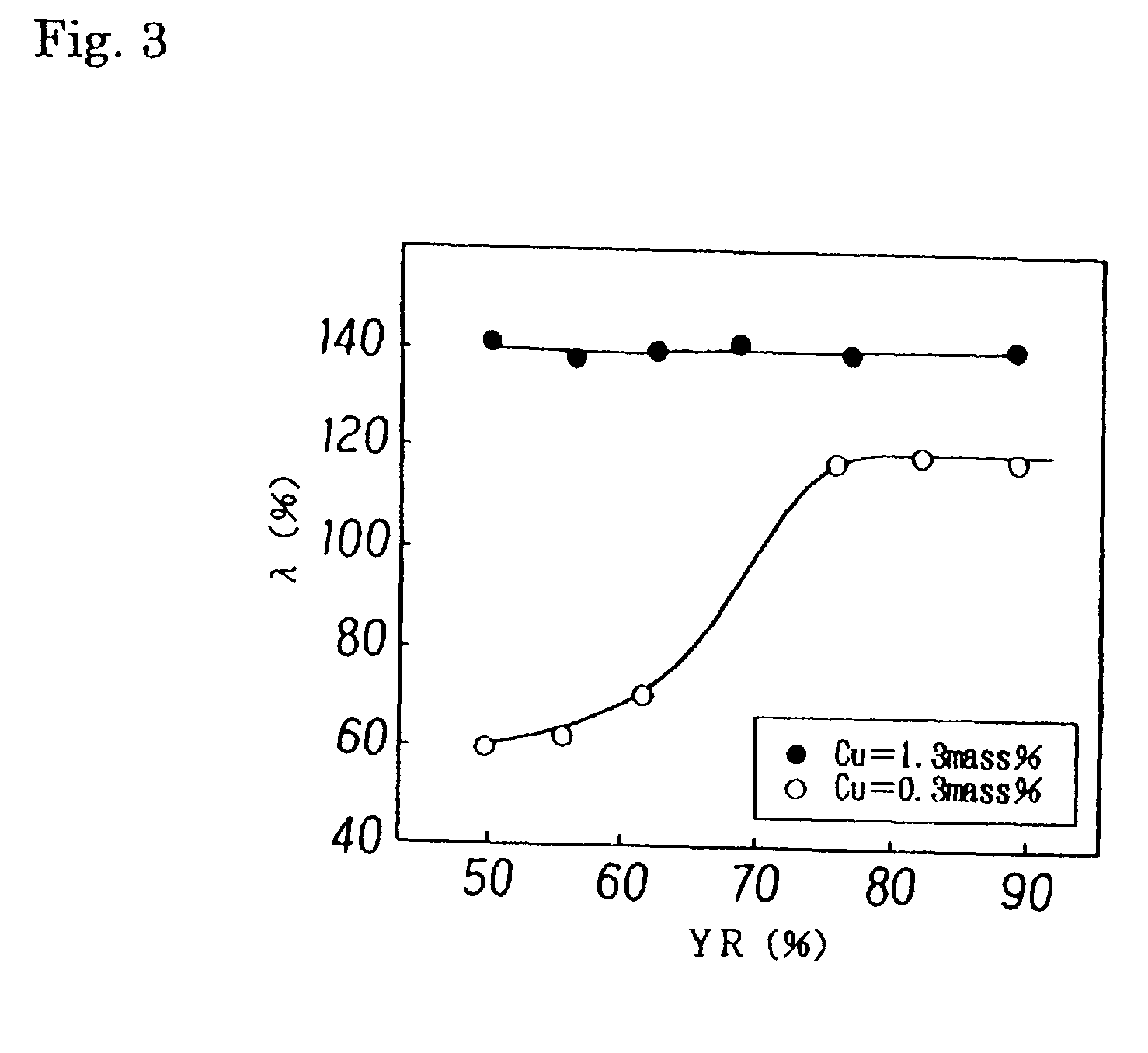Hot rolled steel plate, cold rolled steel plate and hot dip galvanized steel plate being excellent in strain aging hardening characteristics, and method for their production
a technology of cold rolled steel and hot dip galvanized steel, which is applied in the direction of manufacturing tools, heat treatment equipment, furnaces, etc., can solve the problems of reducing the weight of automobile bodies, increasing yield strength and deterioration, and reducing elongation and hole expansion ratio, so as to achieve excellent press-formability, low yield strength, and high elongation
- Summary
- Abstract
- Description
- Claims
- Application Information
AI Technical Summary
Benefits of technology
Problems solved by technology
Method used
Image
Examples
example 1
[0316] Molten steel having the chemical composition as shown in Table 1 was made in a converter, and cast into steel slabs by the continuous casting process. These steel slabs were heated, and hot-rolled under the conditions shown in Table 2 into hot-rolled steel strips having a thickness of 2.0 mm (hot-rolled steel sheets), followed by temper rolling of 1.0%. Steel sheet No. 2 was rolled by lubrication rolling on latter four stands of finish rolling.
[0317] For the thus obtained hot-rolled steel strips (hot-rolled steel sheets), the microstructure, tensile properties, strain age hardening property and hole expanding ratio were determined. Press-formability was evaluated in terms of elongation El and yield strength.
[0318] (1) Microstructure
[0319] Test pieces were sampled from the resultant steel strips, and for the cross-section (section C) perpendicular to the rolling direction, microstructure was shot by means of an optical microscope or a scanning type electron microscope, and the...
example 2
[0330] Molten steel having the chemical composition as shown in Table 4 was made in a converter and cast into steel slabs by the continuous casting process. These steel slabs were reheated, and hot-rolled under conditions shown in Table 5 into hot-rolled steel strips (hot-rolled sheets) having a thickness of 2.0 mm, followed by temper rolling of a reduction of 1.0%.
[0331] For the resultant hot-rolled steel strips (hot-rolled steel sheets), microstructure, tensile properties, strain age hardening property and hole expanding ratio were determined as in Example 1.
[0332] The results are shown in Table 6.
4TABLE 4 TRANSFORMATION STEEL CHEMICAL COMPOSITION (wt. %) POINT (.degree. C.) NO. C Si Mn P S Al N Cr Mo W Nb Ti V A.sub.c3 A.sub.c1 H 0.056 0.29 1.52 0.01 0.004 0.033 0.002 0.13 0.45 -- -- -- -- 820 705 I 0.058 0.68 1.58 0.01 0.003 0.032 0.002 -- 0.31 -- 0.04 -- 0.05 830 715 J 0.053 0.58 1.48 0.01 0.005 0.029 0.002 -- 0.45 -- 0.04 0.03 -- 835 710 K 0.049 0.72 1.88 0.01 0.001 0.033 0.00...
example 3
[0336] Molten steel having the chemical composition as shown in Table 7 was made in a converter and cast into steel slabs by the continuous casting process. These steel slabs were reheated to 1,150.degree. C. as shown in Table 8, and then hot-rolled in a hot rolling step with a finish rolling end temperature of 900.degree. C. and a coiling temperature of 600.degree. C. into hot-rolled steel strips (hot-rolled steel sheets) having a thickness of 4.0 mm. The steel sheet No. 2-2 was lubrication-rolled through the latter four stands of finish rolling. Then, these hot-rolled steel strips (hot-rolled sheets) were subjected to a cold rolling step for cold pickling and cold rolling into cold-rolled steel strips (cold-rolled sheets) having a thickness of 1.2 mm. Then, recrystallization annealing was applied to these cold-rolled steel strips (cold-rolled sheet) on a continuous annealing line, at an annealing temperature shown in Table 8. The resultant steel strips (cold-rolled annealed sheets...
PUM
 Login to View More
Login to View More Abstract
Description
Claims
Application Information
 Login to View More
Login to View More - R&D
- Intellectual Property
- Life Sciences
- Materials
- Tech Scout
- Unparalleled Data Quality
- Higher Quality Content
- 60% Fewer Hallucinations
Browse by: Latest US Patents, China's latest patents, Technical Efficacy Thesaurus, Application Domain, Technology Topic, Popular Technical Reports.
© 2025 PatSnap. All rights reserved.Legal|Privacy policy|Modern Slavery Act Transparency Statement|Sitemap|About US| Contact US: help@patsnap.com



